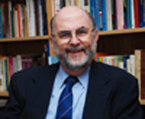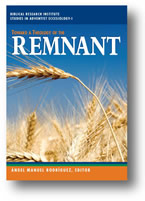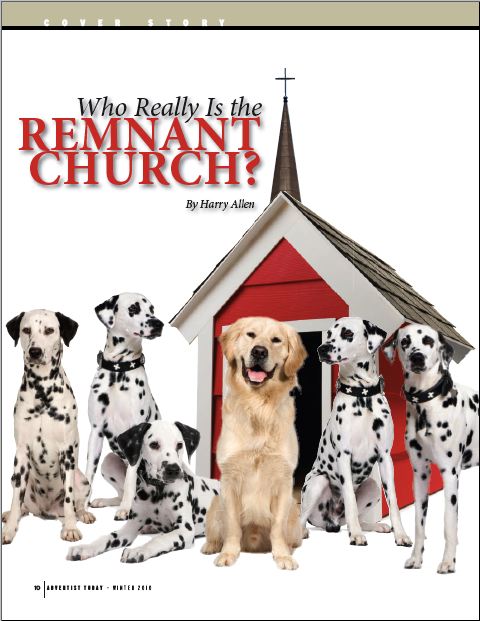An announcement: My paper, “Who Really Is the Remnant Church?,” has been published in the Winter 2010 edition of Adventist Today, above, a quarterly journal of progressive Seventh-day Adventist thought.
It’s one of the most gratifying bylines I’ve ever received. Admittedly, I’m not sure how compelling this news, or the document, will be to people who are not Adventists, nor interested in exegetical critiques of SDA theology.
For those who are, though—one, the other, or both—it should prove provocative reading.
Some background information:
 The doctrine of the remnant is part of Seventh-day Adventist eschatology, or our theology of last events. Particularly, Adventists, right, see themselves as a prophetic movement—one that fulfills a Biblical call for obedience to God’s law during the remaining days of Earth’s history, before the return of Christ.
The doctrine of the remnant is part of Seventh-day Adventist eschatology, or our theology of last events. Particularly, Adventists, right, see themselves as a prophetic movement—one that fulfills a Biblical call for obedience to God’s law during the remaining days of Earth’s history, before the return of Christ.
Thus, one will often hear SDAs refer to our denomination as “the remnant church.” This self-understanding is centered in our reading of statements in the book of Revelation, esp. 12:17 and 19:10. However, the notion of remnancy is found throughout the Bible.
I became interested in our remnant doctrine about a dozen years ago. That is, from the time I began to question our interpretation of the concept, and disagree with aspects of it.
 During most of the subsequent time period, I kept my views to myself. But over the last year, I began to refine my counter-argument. In July 2009, I submitted a 3,500-word document to Adventist Today, above. In December, two days before Christmas, I received notice that my essay would run in the first edition of the new decade.
During most of the subsequent time period, I kept my views to myself. But over the last year, I began to refine my counter-argument. In July 2009, I submitted a 3,500-word document to Adventist Today, above. In December, two days before Christmas, I received notice that my essay would run in the first edition of the new decade.
This is good news, arriving at an important time. Besides being a longstanding belief, remnancy is a topic of rising interest in Adventist circles.
For example, my piece, the editor has told me, is by far the longest article the magazine has ever published. This seems to suggest, no doubt, a growing preoccupation with the subject amongst readers.
 In the October 2006 edition of Ministry magazine, Dr. Gerhard Pfandl, right, of the Biblical Research Institute of the General Conference of Seventh-day Adventists (BRI), said that “the remnant issue is one that is highly debated,” pronouncing it one in a group of “fundamental truths that mark us as a church,” and that “are under attack today, not from outside but from within.”
In the October 2006 edition of Ministry magazine, Dr. Gerhard Pfandl, right, of the Biblical Research Institute of the General Conference of Seventh-day Adventists (BRI), said that “the remnant issue is one that is highly debated,” pronouncing it one in a group of “fundamental truths that mark us as a church,” and that “are under attack today, not from outside but from within.”
(As noted in its purpose statement, the BRI, though small, was commissioned by the General Conference [GC]. The GC is the administrative body that oversees the global SDA church and its 16 million members. The BRI was formed to “promote the study and practice of Adventist theology and lifestyle as understood by the world church.” Accordingly, its conclusions are definitive within our denomination, and for all intents and purposes, represent our scriptural beliefs.)
 More recently, in the online edition of December 2009’s Adventist Review—the flagship journal of the church—BRI head Dr Ángel Manuel Rodriguez, right, published, “God’s End-Time Remnant: What Are the Practical Implications of This Theological Concept?”
More recently, in the online edition of December 2009’s Adventist Review—the flagship journal of the church—BRI head Dr Ángel Manuel Rodriguez, right, published, “God’s End-Time Remnant: What Are the Practical Implications of This Theological Concept?”
 That text represents an even more substantial effort, though, as it is excerpted from, and/or summarizes key ideas found in, Toward a Theology of the Remnant: An Adventist Ecclesiological Perspective, right, a volume of over 250 pages and a dozen essays edited by Rodriguez, and published only this past April. It may be the most extensive treatment SDA scholarship has yet given this issue.
That text represents an even more substantial effort, though, as it is excerpted from, and/or summarizes key ideas found in, Toward a Theology of the Remnant: An Adventist Ecclesiological Perspective, right, a volume of over 250 pages and a dozen essays edited by Rodriguez, and published only this past April. It may be the most extensive treatment SDA scholarship has yet given this issue.
All of which, again, suggests the timeliness of Adventist Today addressing the subject, as well as my posting “Who Really Is the Remnant Church?” here, on Media Assassin, at harryallen.info.
Finally, this year, 2010, is that of the 59th quinquennial General Conference Session of the world church, taking place this June, in Atlanta. Though its working agenda has surely long been set, the spirit of study, self-definition, and introspection is in the air, perhaps to carry through the annum.
My expectation is that a wide circulation of diverse counter-arguments on the remnant—as well as those which advance our traditional position—may engender a more thoughtful, nuanced debate on, and understanding of, this significant issue. At the very least, that is what I believe.


8 comments ↓
Very interesting – I look forward to reading this in more depth.
You nailed it! Went to the heart of the matter and ignored the superficial. Most people today, in our churches, don’t want to go this deep. They want the “party-line.”
As I’ve been saying for awhile, what we preach as “the present truth” is no longer present. It’s mostly true, and it is good background – but where is the present Truth (uppercase, John 14:6)?
You are unlocking some of this. And rather than rejecting something no negligible, most would be wise to say: “Huh!? I never saw it that way before. Thanks for sharing.” – then move on to deeper new truths.
We are a movement, not an institution – at least in theory. Let’s see if people can choose to move forward with this – or if they will guard the institution with every fiber of their beings.
Read it, and its does dispel the belief that a denomination can be the remnant…. It is unfortunate that religion seems to be used by humans to divide and exclude as opposed to unify and include…..
Enjoyed your article. There are two ways to come to your same conclusion:
1) through direct Bible study as you have done, taking sola Scriptura at face value
2) through an intimate experience with the denominational organization in which you come to realize that most of the people leading this thing neither keep the commandments of God nor seem to have any faith at all.
Thanks.
And by the way, does anybody else notice that the whole “visible church” concept is really prone to be twisted around into a ego-centric outlook where we really tend to start believing that the “visible church” (and it’s always “my church”) kind of morphs into “THE church”, i.e. the only church, the “true” church, the “remnant” church? Where did this “visible church” theology come from anyway?
The church has always been plagued by “exclusivistic” thinking, especially after a group has entered the 3rd and 4th generation, and the movement has lost its ability to communicate its original mission to the current residents.
We are no exception. I prefer a simple definition. The remnant is just like the beginning of the bolt of cloth, “they follow Jesus wherever He goes!” That is the whole definition. Whoever is following Jesus is part of the remnant!
Remnant is not something to argue about, or throw at each other, but its a journey to join, its a wedding party to enter!
Agreed Glenn the whole visible church thing is a distraction and becomes more divisive than unifying… Whenever a church or a people believes itself to be special arrogance usually follows, which outweighs any positive influence that group may have had…
Im a christian and what i believe is, im waiting for the coming of my lord and saviour who died for my sins on the cross and now he is sitting at the right hand side of his eternal father
Leave a Comment